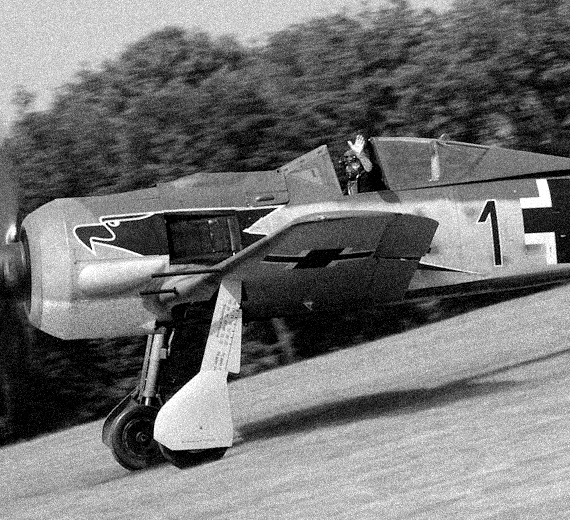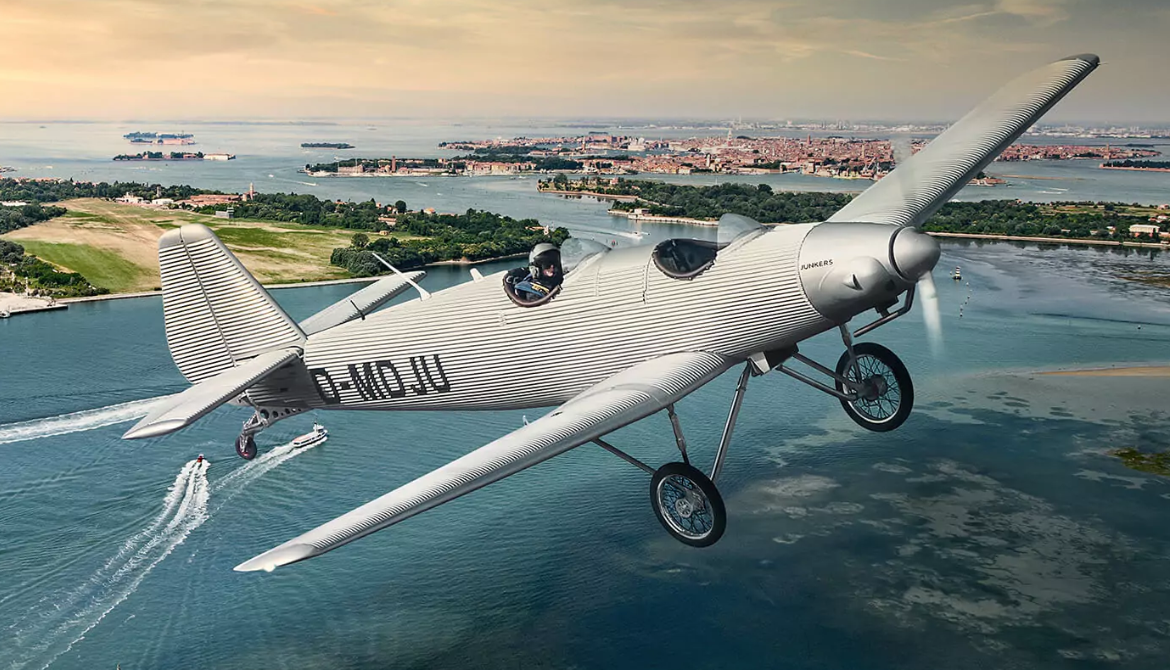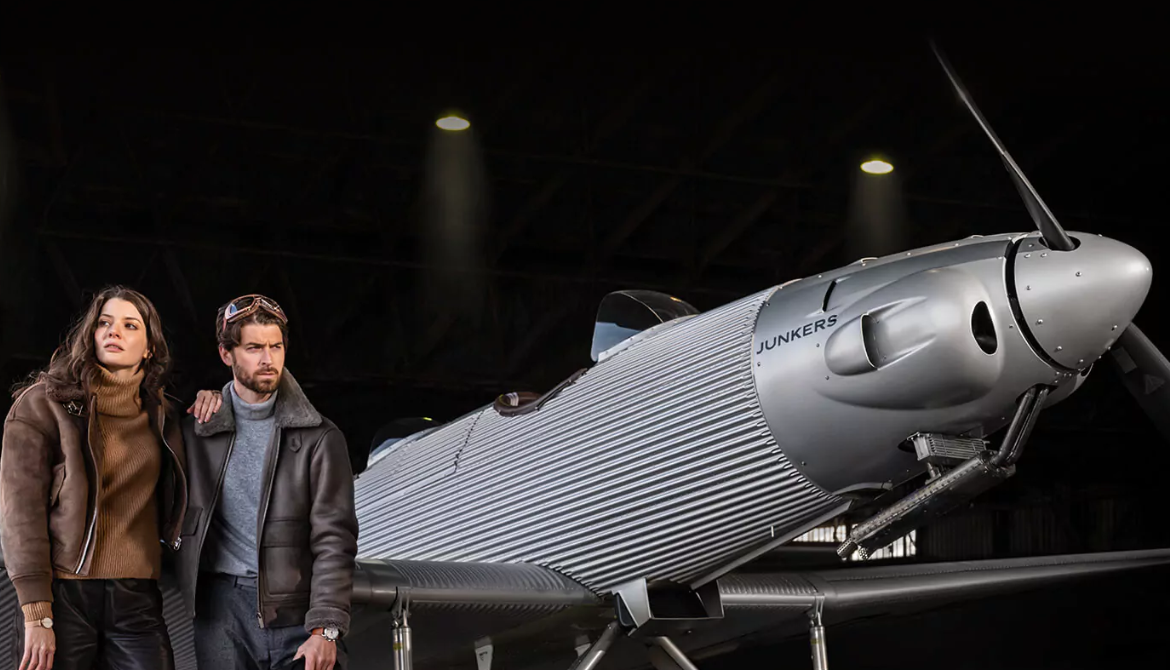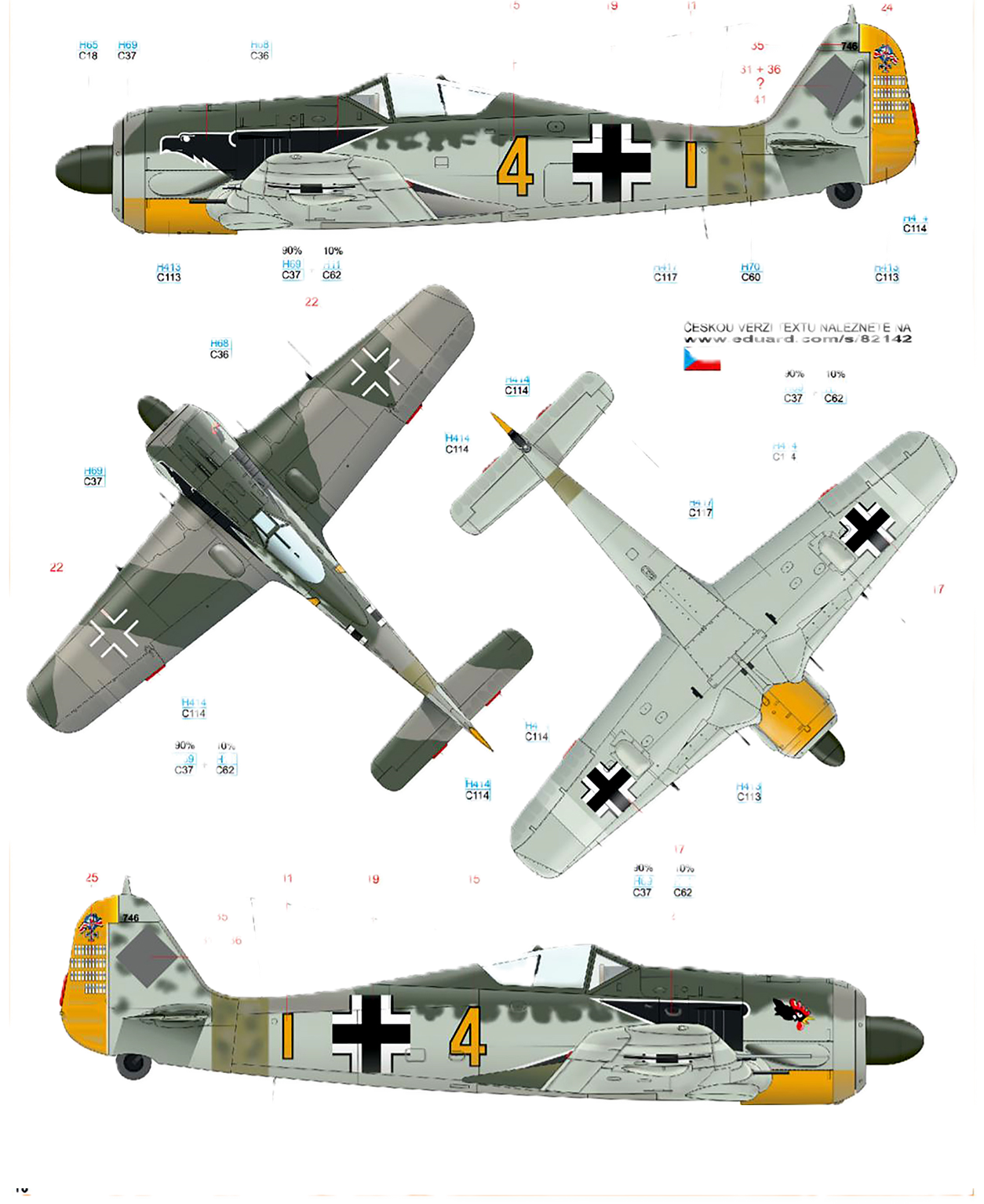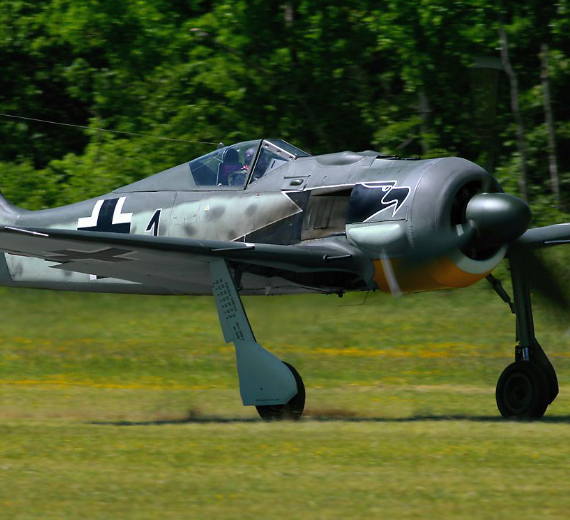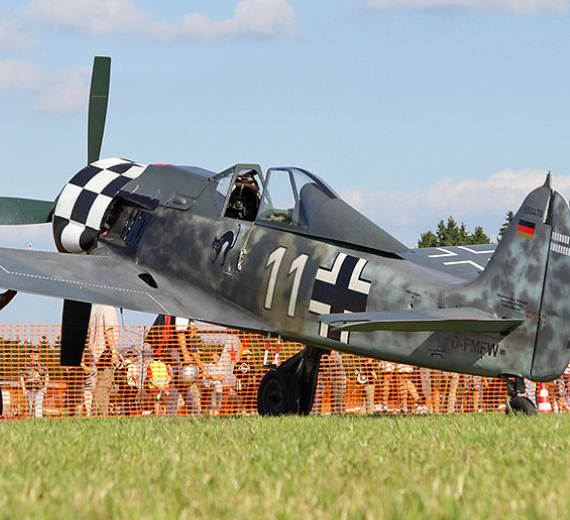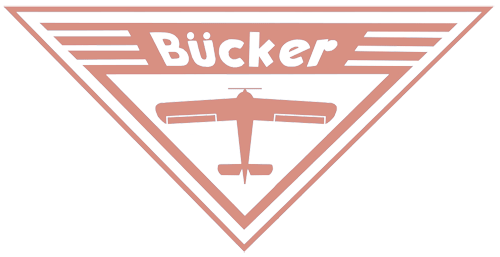FW Flugzeugbau AG
FW-190 Würger "Shrike
Role Fighter aircraft
National origin Germany
Manufacturer Focke-Wulf
Designer Kurt Tank
First flight 1 June 1939
Introduction August 1941
Retired
9 May 1945 (Luftwaffe)
1945 (Hungary)
1947 (Turkey)
1949 (France)
Primary users Luftwaffe
Hungarian Air Force
Turkish Air Force
Produced 1941–1945 (65
produced post-War for French Air Force)
Number built Over 20,000
Developed into Focke-Wulf Ta 152 / Focke Wulf FW-190D Dora
.
History Focke-Wulf Flugzeugbau AG
Focke Wulf FW-190 Würger "Shrike"
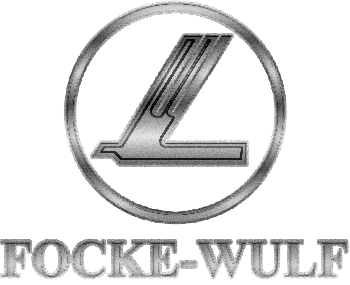
The Focke-Wulf Fw 190, nicknamed Würger ("Shrike") is a German single-seat, single-engine fighter aircraft designed by Kurt Tank at Focke-Wulf in the late 1930s and widely used during World War II. Along with its well-known counterpart, the Messerschmitt Bf 109, the Fw 190 became the backbone of the Jagdwaffe (Fighter Force) of the Luftwaffe. The twin-row BMW 801 radial engine that powered most operational versions enabled the Fw 190 to lift larger loads than the Bf 109, allowing its use as a day fighter, fighter-bomber, ground-attack aircraft and to a lesser degree, night fighter.
IFrom mid-1943, Fw 190s were also used as night fighters against the growing RAF Bomber Command offensive. In mid-1943, one of the earliest participants in the single-engine, ground controlled, night-fighting experiments was the Nachtjagdkommando Fw 190 (Night Fighter Command Fw 190), operated by IV. Gruppe (4 Group), Jagdgeschwader 3, (Fighter Wing 3, or JG 3). The main Nachtgeschwader (Night Fighter Wings) were keen to adopt a new fighter type as their twin-engine fighters were too slow for combat against increasing numbers of de Havilland Mosquito night fighters and bombers. Nachtjagdgeschwader 1 (NJG 1) and NJG 3 kept a pair of Fw 190s on standby to supplement the Messerschmitt Bf 110 and Junkers Ju 88. The considerable performance advantage of the Fw 190 over the other two types was more than offset by the difficulties of operating at night. Few, if any, aerial successes can be attributed to these operational tests...
First prototypes (BMW 139)
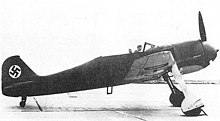
- Fw 190 V1
- (civil registration D-OPZE), powered by a 1,550 PS (1,530 hp; 1,140 kW) BMW 139 14-cylinder two-row radial engine. D-OPZE first flew on 1 June 1939.
- Fw 190 V2
- Designated with the Stammkennzeichen alphabetic ID code of FL+OZ (later RM+CB) the V2 first flew on October 31, 1939, and was equipped from the outset with the new spinner and cooling fan. It was armed with one Rheinmetall-Borsig 7.92 mm (0.312 in) MG 17 machine gun and one 13 mm (0.51 in) synchronized MG 131 machine gun in each wing root.
- Fw 190 V3
- Abandoned
- Fw 190 V4
- Abandoned
Later prototypes (BMW 801)

- Fw 190 V5
- Fitted with the larger, more powerful 14-cylinder two-row BMW 801 radial engine. This engine introduced a pioneering example of an engine management system called the Kommandogerät (command-device) designed by BMW, who also designed the 801's forward cowling with its integral oil cooling system: the Kommandogerät functioned in effect as an electro-mechanical computer which set mixture, propeller pitch (for the constant-speed propeller), boost, and magneto timing.
0
KmCeiling
0
KmCombat RANGE
0
Km/hAircraft Speed
0
Max Crew
Photo Gallery
Focke-Wulf Flugzeugbau AG
Focke Wulf FW-190 Würger


Focke-Wulf Flugzeugbau AG
Focke Wulf FW-190 Würger
General Info
-
-
- Crew: One
- Length: 8.95 m (29 ft 4 in)
- Wingspan: 10.506 m (34 ft 6 in)
- Height: 3.15 m (10 ft 4 in)
- Wing area: 18.3 m2 (197 sq ft)
-
Powerplant
-
- Empty weight: 3,200 kg
- Gross weight: 4,417 kg (9,738 lb)
- Max takeoff weight: 4,900 kg)
- Fuel capacity: 639 L (141 imp gal; 169 US gal)
- Powerplant: 1 × BMW 801D-2 14-cylinder air-cooled radial piston engine 1,700 PS (1,677 hp; 1,250 kW) and up to 1,980 PS (1,953 hp; 1,456 kW) at 1.65 ata for up to 10 minutes of emergency powe
-
Performance
- Maximum speed: 652 km/h at 5,920 m (19,420 ft)
- Range: 900–1,000 km (560–620 mi, 490–540 nmi)
- Combat range: 400–500 km
- Ferry range: 900–1,000 km ) ~1800–2000 km with droptank.
- Service ceiling: 10,350 m
Armament
-
- Guns:
- 2 × 13 mm (0.51 in) synchronized MG 131 machine guns
- 2 × 20 mm (0.79 in) MG 151/20 E cannons, synchronized in the wing roots
- 2 × 20 mm (0.79 in) MG 151/20 E cannons in mid-wing mounts
- Bombs: 1 bomb under fuselage or four bombs under wings.
-
.
Links to Youtube & Others
The Fw 189 had as part of its defensive armament, an innovative rear-gun emplacement designed by the Ikaria-Werke: a rotating conical rear "turret" of sorts, manually rotated with a metal-framed, glazed conical fairing streamlining its shape, with the open section providing the firing aperture for either a single or twin-mount machine gun at the unit's circular-section forward mount.
Focke Wulf AG
FW-190 Würger
Night Reconnaissance Group 15, attached to the 4th Panzerarmee in southern Poland during late 1944, carried out nocturnal reconnaissance and light bombing sorties with a handful of 189A-1s.
Youtube Link
Chronic fuel shortages and enemy air superiority over the 189 defence area (chiefly Berlin) meant that few aircraft were shot down by these craft.
